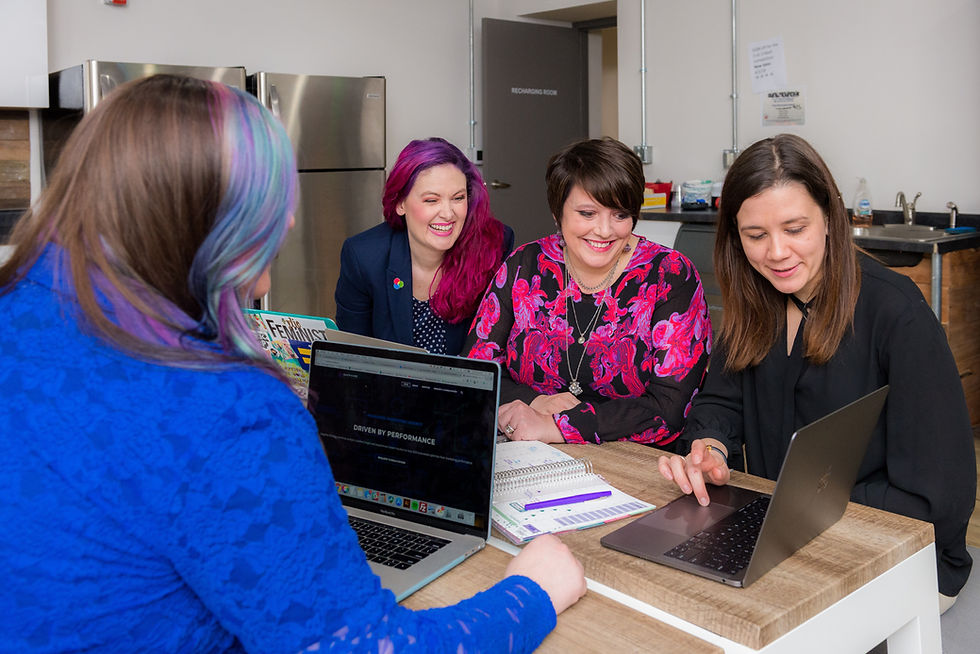Equity is a hot topic right now. You can find comments about equity in every Twitter feed, news commentary that addresses it, and TV show episodes dealing with disparities between groups.
Education is no exception. My email is filled with consultants offering trainings on culturally inclusive practices, inclusive practices to support mainstreamed students and social-emotional resources for disenfranchised students.

I don't bring this up to belittle the conversation, but rather to ensure that we are all a part of it. After all, if we want to live in a world where there is equity and access for all, schools are the best place to start. We all know that we mold students, their ideas and beliefs, to a great degree.
Dr. Nicole Anderson presented at a training I attended last week on equity. There were a few things that rang true in her presentation.
1. If you are going to talk about equity, you'll have to be ready to be uncomfortable and expect non-closure.
I remember a conversation I started in a staff meeting about this very topic. We had noticed a trend in our data that was worrisome. It was more likely for a male student of color to fail classes at our Intermediate school than any other student on campus. The goal of the meeting was to come up with some action steps to address the issue. Unfortunately, that didn't happen! Rather, the outcome was a division in the staff along racial lines that I have always regretted, and which led me to avoid the conversation from then on.

Avoidance of this tough conversation is not the answer, though. It will not help our students. It will not help us grow. We have to prepare ourselves to listen, to understand and to be uncomfortable. And we need to be prepared to sit with that discomfort for a while. These are conversations that require deep understanding, personal growth...and time.
2. Equity is not just offering the same learning to everyone, it is ensuring all students make the gains needed to be successful, no matter what!
I can hear the arguments already:
"I already do so much for these kids!"
"Are you saying I can't fail a kid who does nothing?"
"I guess we are just going to give everyone a passing grade then!"
"Here we go. ONE MORE THING!"
Before you go there, consider this:
When we work together as teams and colleagues, ready to learn and grow;
when we evaluate student work to determine common issues;
when we work together to determine next steps that will benefit all students, relying on the expertise of everyone in the room;

...that is when we see academic growth in EVERY underperforming subgroup.
Yes, EVERY SINGLE ONE, whether the subgroup is based on race, on socioeconomic status or on learning ability.
I've seen it!
Ensuring ALL students have access AND get results is the goal of working together and basing decisions on the student work in front of us. It is what we do when we care for their emotional well-being by truly seeing student, hearing them out and celebrating them. It's not only about academics. It's not only about emotional support. It is always both.
3. Equity requires us to have the same high expectations for all...and allow students to meet those expectations in a variety of ways.
We love to say we have high expectations. We have it in our vision statements and put it in our syllabus. However, there are times when our high expectations come attached to a "my way" approach. Rather than encouraging demonstration of personal learning, we require adherence to specifics that may not show student learning, but rather our own preferences. Let me give you an example.
I remember a poster project I gave one of my Biology classes that required them to use a specific format (the title in the center, the biome on the top, the physical characteristics on the left, and so on). Most students followed the plan and did a great job of illustrating their understanding of the concepts I was looking for.
One student went rogue. He did not title the poster and did not separate out any of the requirements, but his poster was a piece of ART! It was clear that he understood the concepts and took it even further to illustrate the beauty of the organism he selected.

There was a problem though. He was going to fail the assignment if I used the rubric! There was more. The rubric was developed by the Biology department and there was an agreement that we would all use it. The pressure was on! I remember this incident because I debated a long time over this project. The student could REALLY use the credit, but I made a commitment to the team.
What did I do? I tried to do both. I gave him more points than I should have according to rubric, but I docked points for things like the title. Somehow I was unable to see that his learning, his understanding of the concepts was more important than the way he illustrated his learning. Another regret.
Equity requires us to go outside of our comfort zones. It changes the way we think about how our expectations are met by students . If we are truly on the side of equity, we requires us to be committed to ensuring success for all.
Equity in education is not one more thing.
Equity in education is the only thing.
Wishing you a fabulous week.
Kim
Commenti